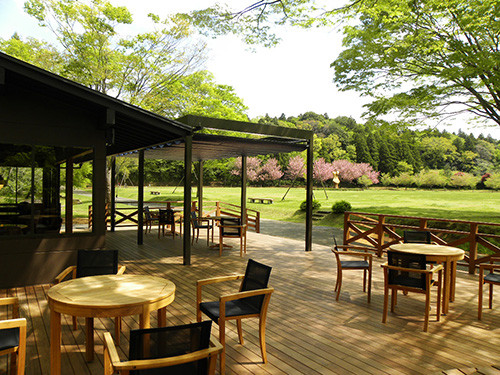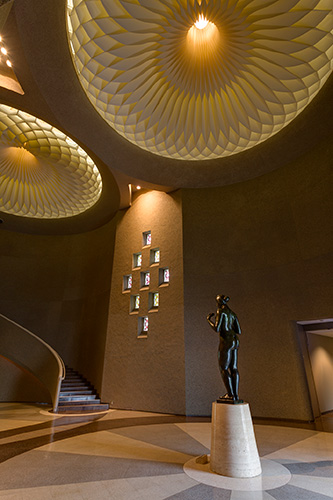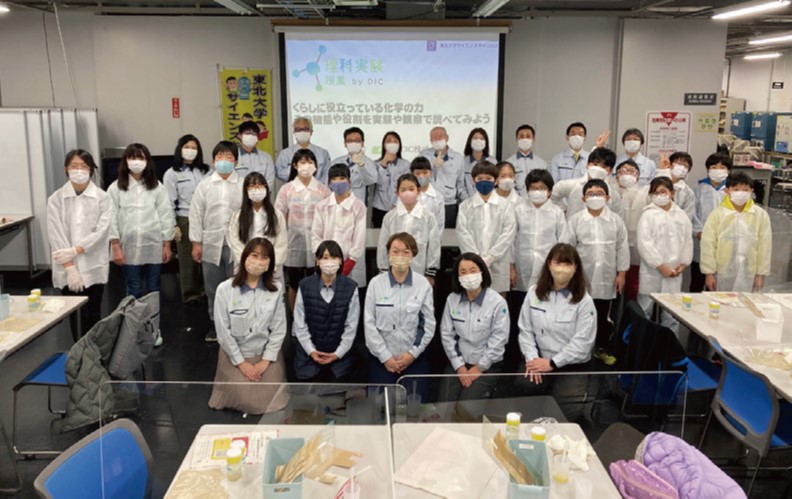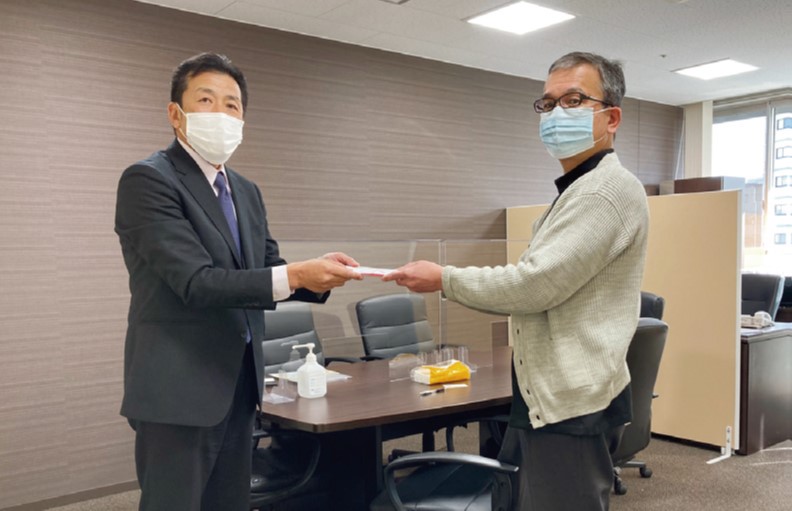Social Contribution Activities
Basic Approach to Social Contribution
Based on its Guidelines for Social Contribution Activities, established in fiscal year 2009, the DIC Group works to ensure harmony with local communities and individuals through activities aimed at building a strong relationship with society.
Guidelines for Social Contribution Activities
In line with its vision statement, “We improve the human condition by safely delivering color and comfort for sustainable prosperity—Color & Comfort,” the DIC Group will promote social contribution in three areas: Business activities, culture and education, and communities and society.
Business activities
The DIC Group will offer products and services that contribute to the development of a sustainable society and protection of the global environment from the perspective of “sustainability through business activities.”
Culture and education
The DIC Group will engage in initiatives that will contribute to the development and promotion of culture, the arts, science and education, including fostering next-generation human resources in areas such as the culture of color and chemistry.
Communities and society
The DIC Group will strive to coexist harmoniously with local communities to develop a relationship of mutual trust. Moreover, the Group will provide an environment that enables employees to engage in voluntary initiatives in their respective local communities.
Principal Initiatives
CUD: The Future of Color and Comfort
The DIC Group is actively involved in R&D in the area of color universal design (CUD) as well as in expanding public awareness and understanding of CUD’s importance.
2007–2010
Japan Paint Manufacturers Association, the Industrial Research Institute of Ishikawa and the Color Universal Design Organization embarked on a project to create the Color Universal Design–Recommended Color Set. Thanks to repeated verification tests, the organizations realized a set of colors that are relatively easy to distinguish regardless of ability to see colors and can be reproduced using printing inks, coatings and digital imaging, and embarked on efforts to encourage recognition and use.
2011–2014
The DIC Group and architect Kengo Kuma collaborated to develop new tactile paving that ensures high visibility for visually impaired individuals and is in harmony with the landscape. Subsequently, in spring 2018, two new color options—a warm orangey yellow and a cool yellowish green— were commercialized under the name Lucida®, which have since been adopted for use in numerous buildings and stations.
2015–2017
The DIC Group participated in a joint industry–academic research project, as part of which Chiba University, the Central Research Laboratories and DIC Color Design, Inc., gave presentations at academic conferences around the world on joint research in the color appearance of red spot colors used for printed warnings and other important information on packaging and on the use of color in printed materials to enhance readability for seniors.
2018
Taking into account nearly a decade of use, the participants in the original project to create the Color Universal Design–Recommended Color Set revised the set’s color values to further enhance usability. The organizations also cooperated to publish a guidebook on effective use of the set and have since worked to promote understanding and awareness.
In 2018, the Japan Industrial Standards (JIS) announced a groundbreaking new standard for safety colors that can be distinguished by people with diverse types of color vision (JIS Z 9103). As a member of the original drafting committee, the DIC Group was involved in setting recommended CMYK values for process printing and also cooperated in subsequent activities aimed at advancing awareness.
2019–2021
DIC began participating as an expert in the field of color in the verification of safety-related color schemes for applications such as disaster prevention information. In this capacity, the DIC Group took part in verification testing for the setting of RGB values for screen displays for a color scheme (five colors) developed to convey heavy rain warning levels in an easy-tounderstand manner, which was announced in 2020 by Japan’s Cabinet Office. In formulating CMYK values for the same color scheme, announced in 2021, DIC Graphics cooperated by not only verifying candidate colors but also printing a color chart for use in the verification process.
March–April 2022
In March and April 2022, the DIC Group published a two-part feature on its efforts to contribute to society through color in the Japanese-language space of its global website. Since then, the Group has continued working to provide stakeholders with information on its initiatives to make society more accessible to people with diverse types of color vision, as well as to introduce key difference makers from both within and outside the Group.
March 2023
DIC Color Design held a webinar on the value and purpose of CUD and how it can be used to promote activities in accordance with the Sustainable Development Goals (SDGs). Taking into account the challenges associated with color use and design in a diverse society, the DIC Group leveraged its expertise in CUD, as well as related technologies, to people involved in the production of goods and information to ensure that color and CUD fulfill their potential to contribute to the realization of the SDGs.
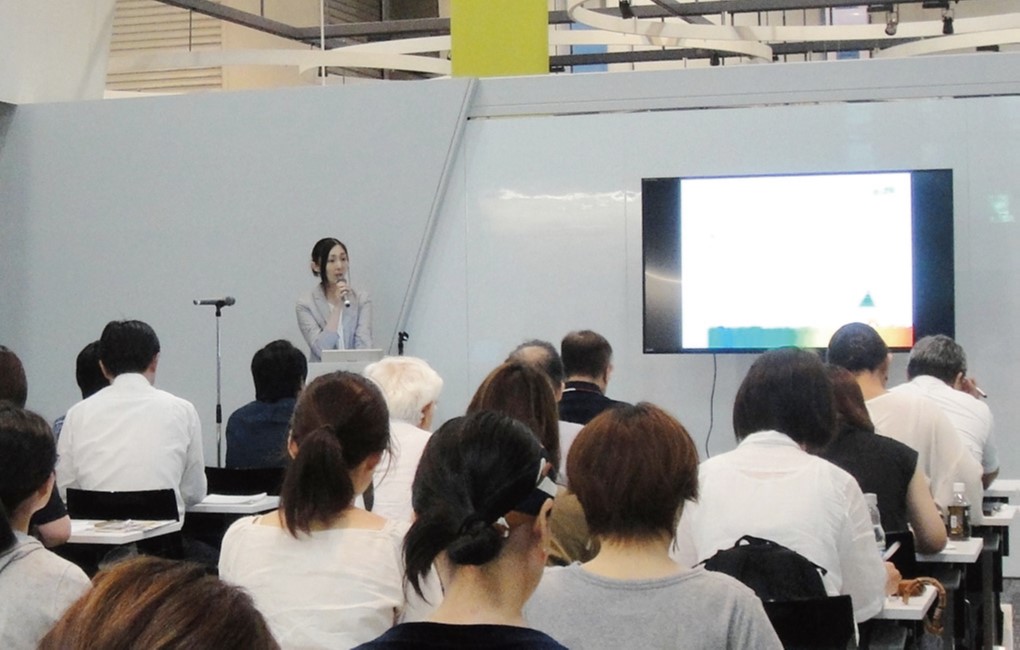
Kawamura Memorial DIC Museum of Art
The Kawamura Memorial DIC Museum of Art, located adjacent to the Central Research Laboratories in Sakura, Chiba Prefecture, was established in 1990 to publicly exhibit works of art collected by DIC Corporation and its affiliates. The museum’s extensive collection spans numerous genres, encompassing an oil portrait by Rembrandt, a rarity in Japan, as well as works by impressionists such as Monet and Renoir; modern European artists such as Picasso and Chagall; early modern, modern and postwar Japanese artists; and luminaries of late-20th century American art, including Mark Rothko, Cy Twombly and Frank Stella. In addition to a standing exhibit from its permanent collection, the museum stages special exhibitions multiple times a year to encourage a deeper understanding of the works in its collection.
Another appealing aspect of the museum is its location on a lushly forested 10-hectare site alive with seasonal flowers and foliage that has been open to the public since the museum’s establishment. A total of 250 cherry trees—10 varieties in total—blossom every spring while in summer wildflowers of all colors bloom profusely.
In fiscal year 2023, the museum is celebrating its 34th anniversary. Two special exhibitions are being held. “Rendez-vous dans le Midi” focuses on the south of France as a place where art flourished in the 20th century, exhibiting approximately 150 works by around 30 artists from museum and other collections in Japan through which it highlights the extensive interaction among artists active in the region, as well as the forms of expression and artistic techniques that evolved. “Josef Albers: Pedagogical Experiments” will introduce works by the painter, designer and art professor, who was active in Germany and the United States. This will be the first retrospective of Albers’ works held in Japan.
Many museum programs, including regularly scheduled guided tours, the “mite!” (“look!”) online interactive art-viewing experience, art appreciation tours for students and other educational support activities, and group museum visits were curtailed over the past three years due to COVID-19. The museum is promoting the gradual resumption of these and other activities, making adjustments as necessary to prevent the spread of infection, with the ultimate goal of restoring these initiatives to pre-pandemic levels.
Looking ahead, the museum will continue to plan and stage exhibitions centered around works from its collection. The museum will also advance social contribution activities and enhance its digital presence with a view to encouraging communication with the community.
Related Link
Visiting Science Lab Program
In line with the Japanese government’s efforts to further career education initiatives, DIC conducts visiting science labs at public elementary schools. Based on the theme of “Color & Comfort,” this program, which highlights how science can help secure a brighter future for humanity and the planet, comprises experiments that involve observing the mechanism of color printing, extracting natural pigments from algae and dissolving recyclable adhesives.
Initiatives Led by the Central Research Laboratories
The Central Research Laboratories provides support for education through a variety of initiatives. These include assisting with the Annual Meeting on Scientific Research by High Schools, which is sponsored by Chiba University’s Section of Collaboration with High Schools and features research presentations from across Japan. In fiscal year 2022, five researchers attended this event, listening to a total of 493 presentations, taking part in Q&A sessions and otherwise encouraging research by participating high school students, who aspire to careers in the sciences.
The Central Research Laboratories also advances efforts that leverage DIC’s unique capabilities. These include lectures for high schools that have earned Super Science High School* designation, including Seishin Gakuen High School in Ibaraki Prefecture, and Sakura Senior High School and Funabashi High School in Chiba Prefecture, as well as fashion design workshops for students from Sakura Higashi High School in Chiba Prefecture.
- “Super Science High School” is a designation awarded by Japan’s Ministry of Education, Culture, Sports, Science and Technology to high schools that implement curricula focused on the sciences and mathematics that goes beyond the Ministry’s official guidelines with the aim of fostering the next generation of talented engineers and scientists.
Highlights of Fiscal Year 2022
- Educational support activities in fiscal year 2022 included holding workshops at Sakura Higashi High School and Super Science High School lectures at Seishin Gakuen High School, among others. The Central Research Laboratories also continued to assist Super Science High School–designated schools through participation by executive-level employees in the steering committees of Sakura Senior High School and Funabashi High School.
- Other initiatives in fiscal year 2022 included once again hosting the Chiba Prefectural Dream Challenge Hands-On School, a popular program for elementary school children organized by the prefecture’s Board of Education. The Central Research Laboratories also participated in the “Now I Get It! Technologies of the Future” exhibition, held to coincide with schools’ summer vacation with the aim of nurturing children’s curiosity about science and technology and encouraging the next generation’s interest in work in the manufacturing sector.
Initiatives Led by the Kashima Plant
The Kashima Plant, in Ibaraki Prefecture, has accepted trainees in cooperation with Ibaraki Hasaki High School’s internship program— dubbed the Hako Duel System—since 2008. In fiscal year 2022, three students from the school’s industrial chemistry and information sciences programs participated in lectures on product knowledge, safety and compliance, and in practical training at the plant, over a period of three months.
Social Contribution Activities at DIC Group Companies in Other Countries and Territories
Social Contribution Activities at DIC Group Companies in Other Countries and Territories
Sun Chemical Colombia S.A.S. launched a zero-waste project to drastically reduce the volume of waste generated by its production activities in a bid to lower its impact on the environment. A bottomup initiative, this project was inspired by suggestions put forth by site employees, including to reuse containers and logistics materials deployed in production processes, rigorously separate and recycle waste, and prevent the discharge of hazardous substances by adopting sealed lids for the storage of volatile solvents. The DIC Group will continue to espouse a corporate culture that encourages each and every employee to take on new challenges, thereby helping secure a brighter future for humanity and the planet.
Supporting Humanitarian Assistance for Ukrainian Refugees
DIC has donated approximately $300,000 to help provide humanitarian assistance for refugees from the current crisis in Ukraine. In addition to a donation to the United Nations High Commissioner for Refugees (UNHCR)—the UN Refugee Agency— the Company set up a joint fund with Sun Chemical, with both companies contributing approximately €100,000. This fund forwards donations to various nonprofit organizations for the provision of assistance and relief, including housing and gifts for children, to employees of the DIC Group and customer companies, as well as to refugees who have fled the country.
Matching Gift Program
DIC has a matching gift program in Japan whereby it matches the total amount collected through an annual year-end fundraising drive spearheaded by its employees’ union. Funds raised through the 2022 drive and matching gift program were donated to 19 children’s homes and facilities providing support for disabled individuals.
Back number


